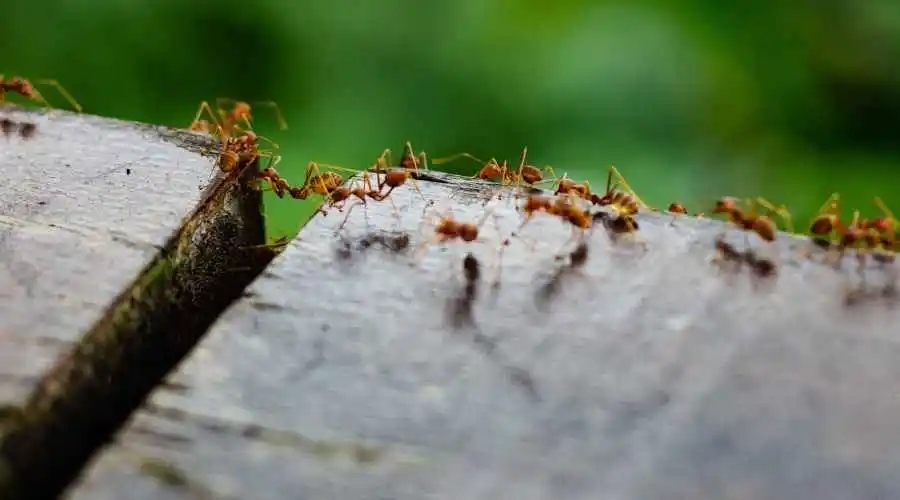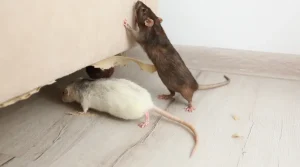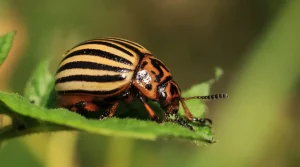Little black ants frequently appear in kitchens and restrooms, seemingly out of nowhere. Don’t be alarmed if you find tiny black ants in your kitchen! These are common indoor ants, also known as “nuisance ants” or “odorous house ants.” The bad news is that you have an ant infestation and must eliminate it quickly before the population grows.
The good news is that annoyance ants do not eat through wood or cause damage to your home’s structure. They, like humans, are far more concerned with eating and drinking than anything else.
Here’s how to prevent ants in the kitchen
Ants live where in my house?
Contrary to popular belief, ants do not typically live indoors. They form colonies around your property and send out “scout ants” to gather food and water for the colony. Have you ever wondered why one and one day and hundreds the next? The scout ant is the one you see looking for supplies and directing the colony. Ants occasionally travel in a single line because they leave a pheromone trail to signal the colony to follow them.
House is small and stinky. Ants can be found anywhere but are most commonly encountered in bathrooms and kitchens. They can scavenge a large area because of their ability to scale walls and move between your house’s stories. Are there any ants in other parts of your home?
They are drawn to basements because of the higher moisture levels caused by nature. In reality, you can find little black ants all over your house. There is no precise method for entirely and accurately sealing off your home against small ant infestations.
What attracts ants to my kitchen?
The most common place to encounter pesky ants is in your kitchen. They are drawn to resources such as food and water to keep the colony alive and growing. After meals and snacks, your family may unavoidably leave crumbs. Floor crumbs are unavoidable unless you are meticulous in your cleaning and sweeping. Even if you meticulously clean your kitchen floor, ants will be drawn to alternative food sources that you may be unaware of.
Because of pet food bowls, tiny ants and other pests may thrive in your kitchen. To avoid this situation, at the end of each day, dispose of any leftover pet food or pick it up off the floor and place it in a sealed container. Ants can easily find pet food and other pests in poorly sealed containers, such as large paper bags. Water dumps from the bowl are an even more effective ant deterrent. Because dogs and cats frequently eat and drink in an untidy manner, leaving crumbs and water droplets that attract ants, it is also necessary to clean the area around the bowls.
Water is another factor that attracts tiny house ants. Ants can enter your home through a leaking pipe in your dishwasher or under your sink, as well as standing water.
Use a trash can lid to protect ants from leftover food scraps and crumbs. Food stored in your cupboards and pantry but not adequately sealed may also determine why ants find your kitchen appealing. Isn’t it true that what’s out of sight, out of mind? Moving loose goods or easily penetrated containers like cereal boxes can help you avoid pantry pests like Indian meal moths and saw-toothed grain beetles. Another way to keep an eye on readily available items is to throw away overripe fruit on your counter. Remember that sweets attract ants.
Why can’t I get rid of ants on my own?
Getting rid of ants can be difficult if you don’t target the source. If you don’t focus on the nest, you’ll only eliminate the visible ants. Ant colonies are mostly found outside rather than inside.
The ants actively seek food and liquids to return to the colony. If you make your home less appealing to ants, they will be less likely to attack it.
Ants are not only difficult to eradicate, but they are also widespread.
House ant colonies can number in the thousands and be found throughout your property. Outside your home, odorous house ants can be found in wood piles, the dirt behind rocks, and under potted plants. It’s even more challenging to eradicate the problem without professional pest management because their nests migrate, adding to the complexity.
Our knowledgeable service professionals will investigate the causes of your ant activity to establish a barrier of protection. Gel baiting may be used indoors if the technician determines that additional treatments are required for effective ant control.




